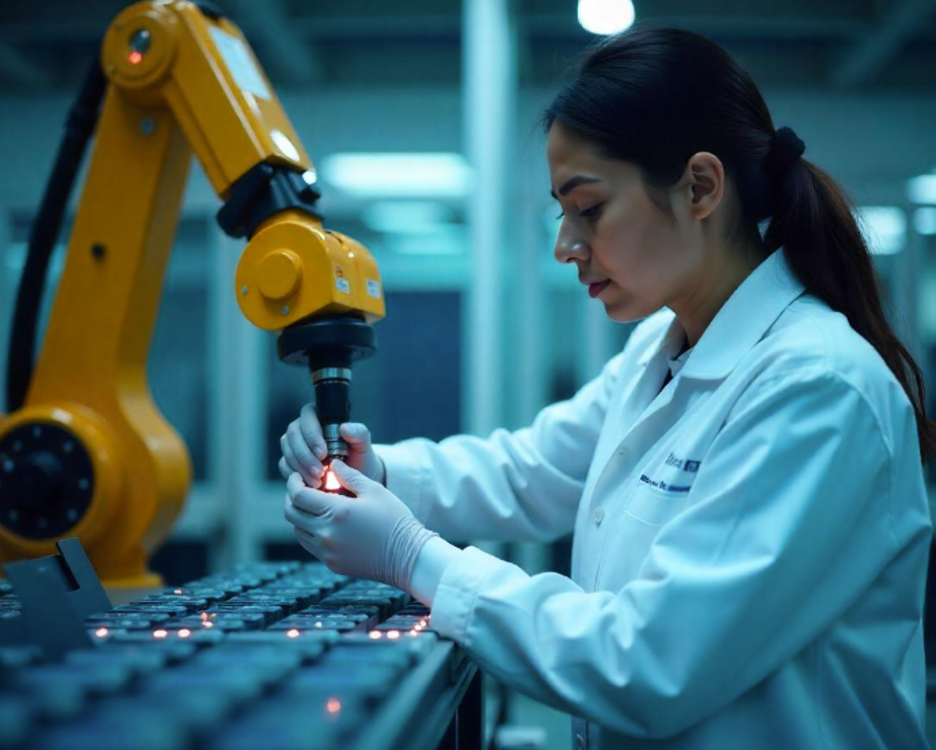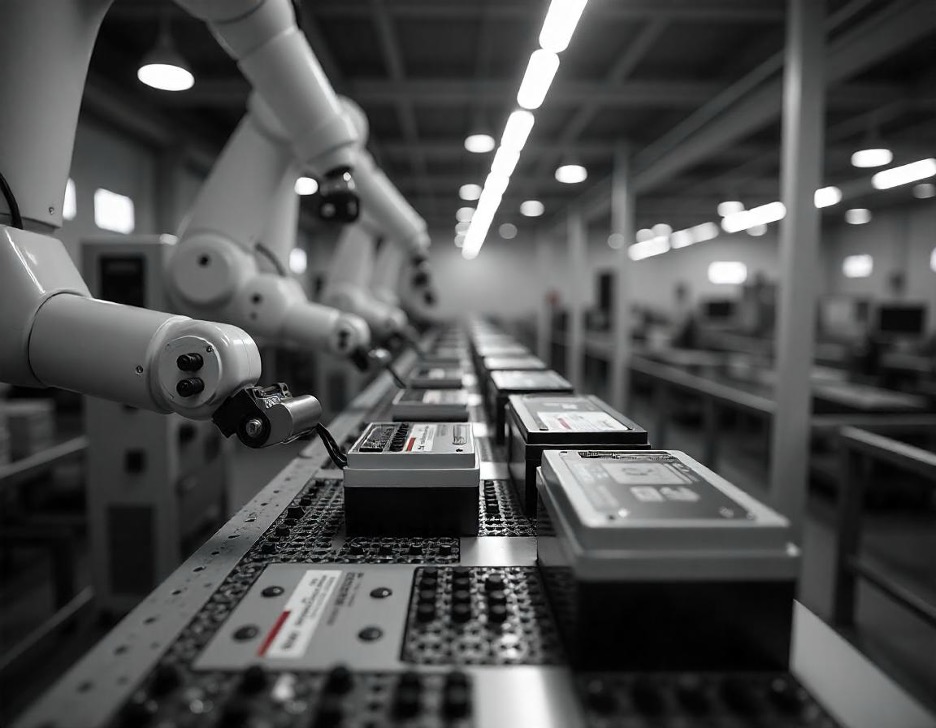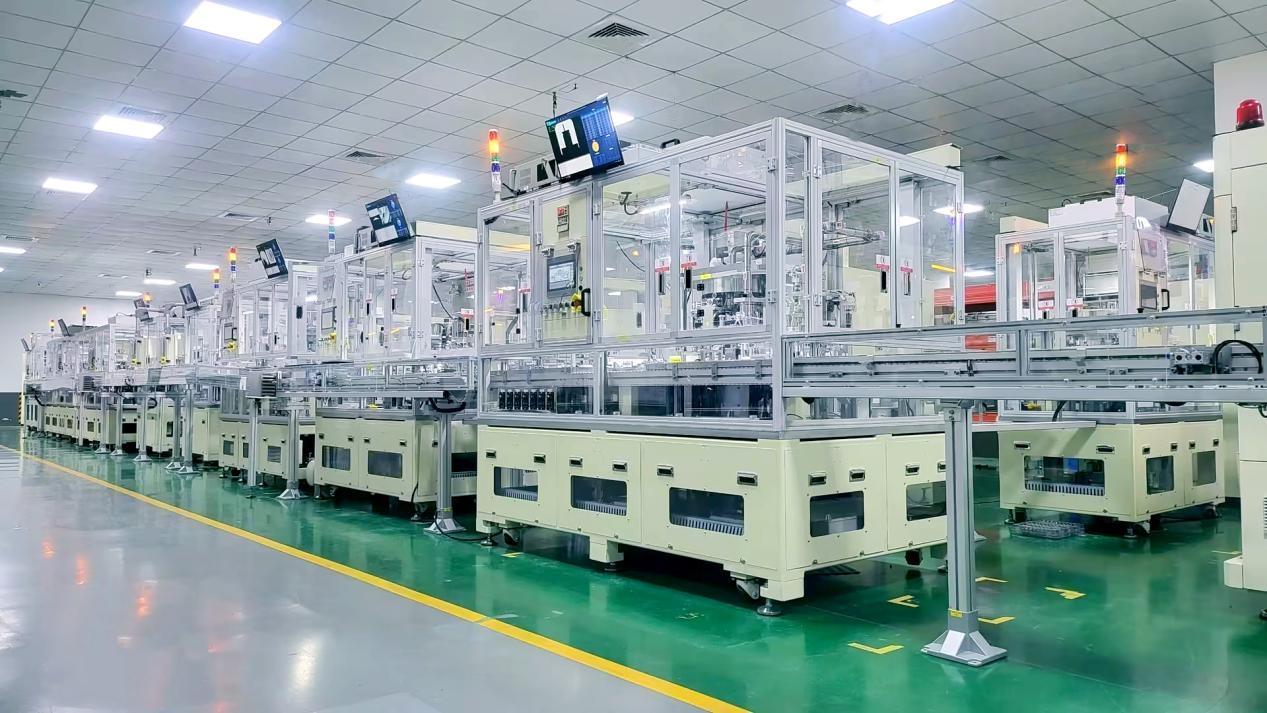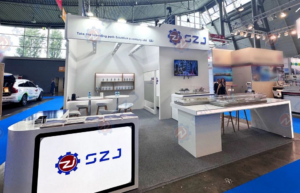Battery Energy Storage Systems (BESS) store energy to the grid or the end users. They play a role in renewable energy integration and maintaining grid reliability and bring an easy way to utilize renewable energy from wind, solar energy, etc.
This is how a rapid prevalence of BESS applications worldwide. It is driven by the increasing adoption of renewable energy, advancements in battery technology, and the need for grid modernization.
Behind it, there is a strong interdependence between battery production and the delivery of residential & commercial energy storage systems. The manufacturing capacity, efficiency, and material choices influence the availability and performance of BESS applications. With advances in battery technology, the BESS market enhances storage capacity, and their users can have a long-span, durable, and reliable operation. These improvements directly impact the development and scaling of the BESS industry.

Key Factors in Battery Production That Impact BESS Manufacturing
1. Technological Innovations in BESS Battery Manufacturing
Advancements in technology drive improvements in battery production. Solid-state batteries offer better energy density and improved safety compared to traditional designs. Prismatic cells and blade cell designs enhance battery performance and optimize space within storage systems. More importantly, the automation and smart manufacturing system can reduce the chances of mistakes and enhance the assembly efficiency of manufacturing the batteries on the BESS system.
2. Emphasis on Sustainability and Green Practices on Battery Assembly
Battery manufacturers adopt practices to reduce environmental impact. They use eco-friendly materials to lower carbon emissions. End-of-life recycling helps recover valuable raw materials like lithium and cobalt. This reduces dependency on mining and ensures a sustainable supply chain.
These green practices align with the goals of renewable energy industries. Using efficient and eco-friendly battery manufacturing equipment, manufacturers can cut the influence on the environment in the battery assembly process. This improves efficiency while supporting long-term sustainability.
3. Supply Chain Dynamics and Challenges on Manufacturing BESS
Supply chain factors significantly affect battery production, which would delay your BESS delivery. Raw material availability influences production schedules and costs. Labor costs and trade policies also play a role in determining production efficiency.
High production volume is crucial to meet demand for BESS manufacturing. Manufacturers address these challenges by investing in reliable equipment and streamlining logistics. Advanced tools help optimize material usage and ensure consistent output. Addressing supply chain challenges supports stable and scalable battery production for energy storage systems.

Strategies to Boost Battery Production for BESS Demand
1. Expanding Battery Manufacturing Facilities
Scaling production starts with increasing manufacturing capacity. Building new factories allows you to meet growing demand while addressing regional supply chain needs. Expanding existing facilities with upgraded machinery improves throughput and minimizes downtime.
And, advanced battery manufacturing equipment helps you achieve consistent quality, streamline production, and reduce energy consumption. Investing in facility expansion ensures your operation keeps pace with the rising demand for BESS applications.
2. Partnering with Educational and Research Institutions
Collaborations with universities and research centers drive technological progress in battery production. These partnerships often focus on developing innovative materials, improving energy efficiency, and extending battery life.
You also gain access to cutting-edge research that enhances production methods. Institutions can also support the optimization of battery manufacturing equipment, making your processes more effective and cost-efficient. Such initiatives promote continuous improvement in battery technology and manufacturing.
3. Implementing Battery Recycling Practices
Recycling directly contributes to a more sustainable and reliable supply of critical raw materials like lithium, cobalt, and nickel. This is crucial for battery production as it alleviates the pressure on natural resources and helps stabilize material supply, which is essential for meeting the production volumes required by the expanding BESS market.
At the same time, as recycled materials are reintroduced into the production cycle, they often require less energy to process than virgin materials, leading to a green, energy-saving, and increased overall production efficiency.
4. Leveraging Advanced Manufacturing Techniques
Modern production techniques significantly improve efficiency. Automation reduces manual labor, increases speed, and ensures consistent quality. Computer-driven systems detect defects early, preventing costly errors. Continuous laser welding improves precision and durability in assembling prismatic and blade cell designs.
Applying more of these technologies can reduce waste and maximize the utility of raw materials. So, it is reasonable to upgrade to advanced battery manufacturing equipment positions you to compete in a rapidly evolving energy market while delivering high-quality products efficiently.
SZJ Automation on Battery Production: Prismatic Cell Turnkey Solution
At SZJ Automation, we excel in providing advanced battery production solutions. One of the solutions is Prismatic Cell Turnkey Solutions, which is suitable for battery manufacturers to meet the fast-expanding market on BESS. Here’re some of the features:
- Complete Solution: SZJ Automation’s Prismatic Cell Turnkey Solution includes all the necessary components and software required to set up and run a complete battery production line. It simplifies the process for BESS manufacturers to establish or expand their production capabilities.
- Steady productivity: This turnkey battery manufacturing equipment ensures a consistent output of 6-20 PPM, increasing battery production capacity.
- Continuous laser welding technology: Our self-developed laser-wielding technology enhances prismatic cell production, improving efficiency by 3-5 times compared to traditional segmental welding.

Conclusion
Battery production plays a key role in shaping the BESS industry. As demand for energy storage grows, efficient and scalable manufacturing becomes crucial. At SZJ Automation, we can provide advanced battery manufacturing equipment to meet these needs. Our solutions improve productivity, reduce production time, and support manufacturers in meeting market demands. SZJ Automation remains committed to delivering reliable, high-performance equipment for the BESS industry. Our expertise helps manufacturers stay ahead in an increasingly competitive market. Visit our SZJ Automation’s official websites to learn more information.



